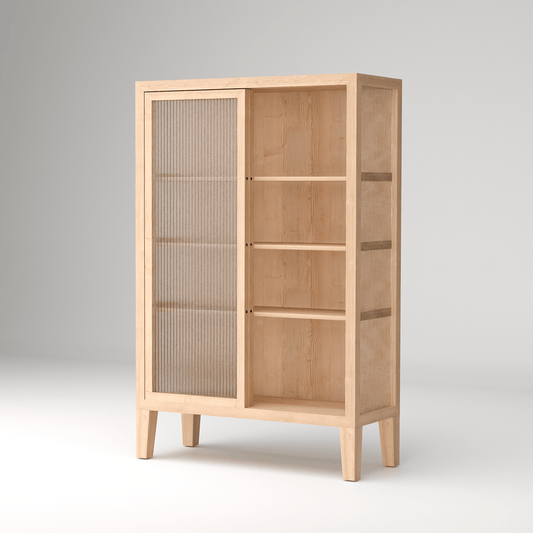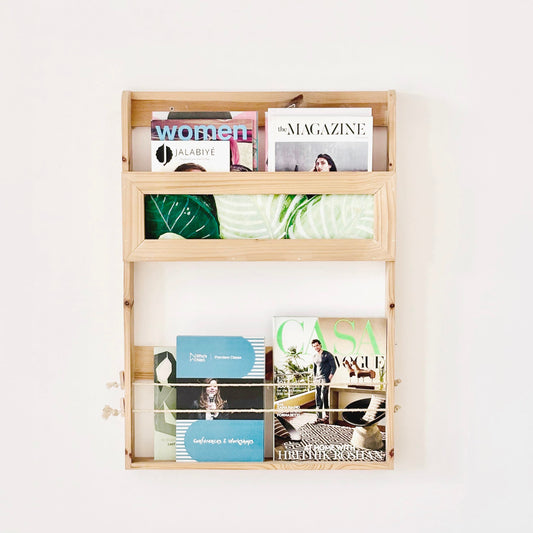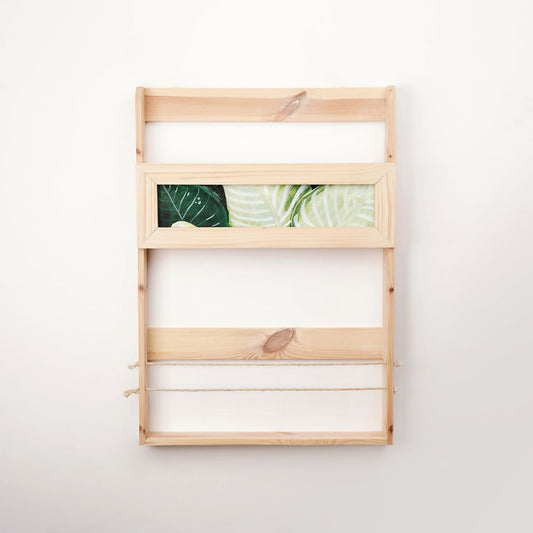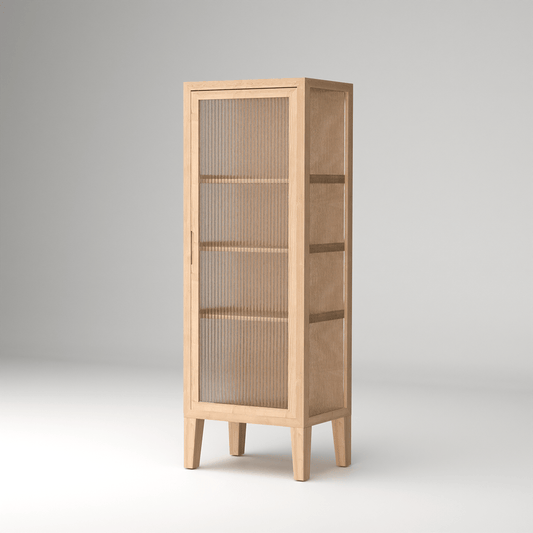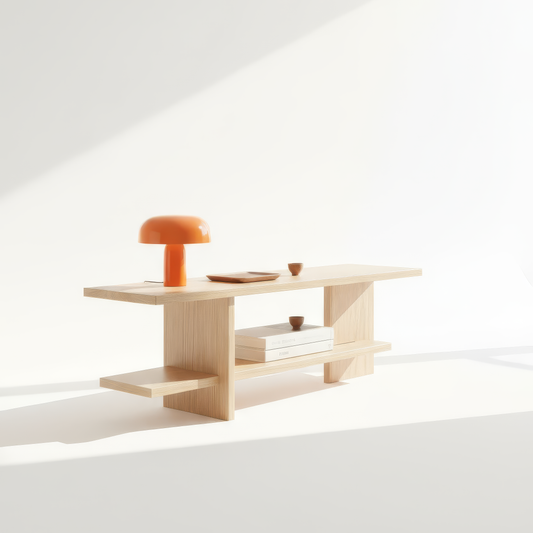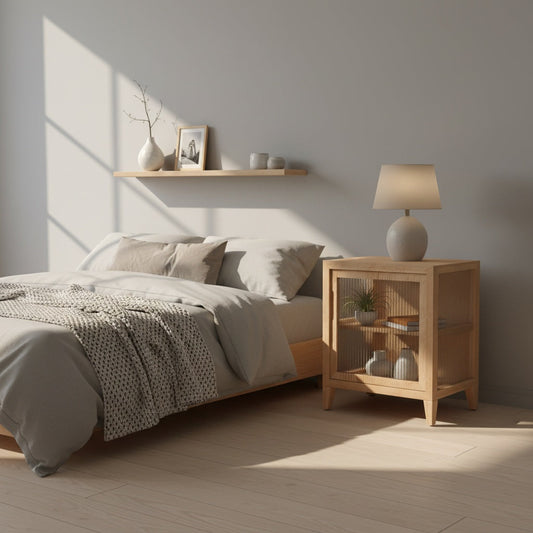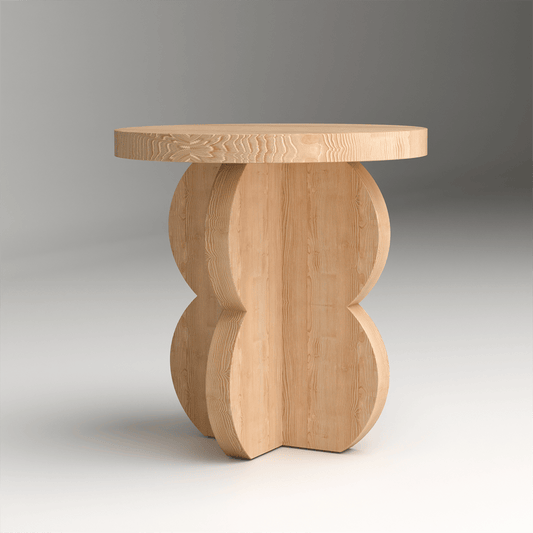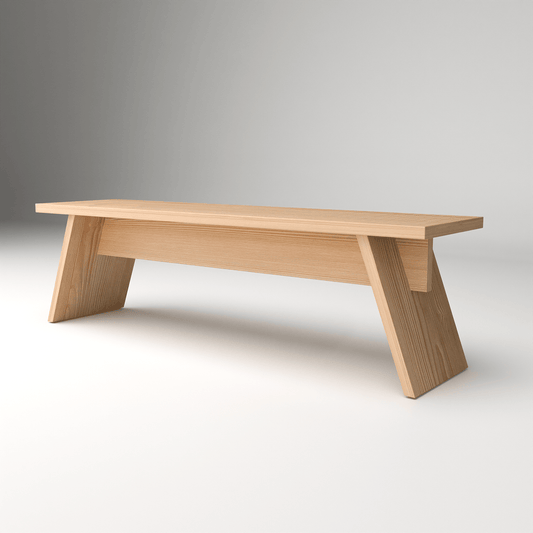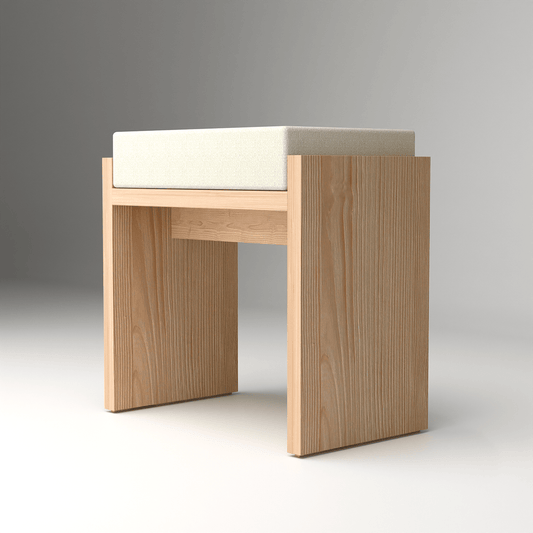Caring for sustainable wood furniture is both an art and a science that ensures your investment in environmentally responsible design continues to provide beauty, functionality, and satisfaction for generations. Proper care not only maintains the aesthetic appeal of your furniture but also honors the environmental benefits that sustainable wood provides by maximizing its lifespan and minimizing the need for replacement.
At A Good Life, we understand that purchasing sustainable wood furniture is just the beginning of a long-term relationship between you and pieces that will become part of your family's story. Our handcrafted pine wood furniture is designed to improve with age and proper care, developing character and patina that make each piece more beautiful over time.
Understanding Your Sustainable Wood Furniture
Before diving into specific care techniques, it's essential to understand the unique characteristics of sustainable wood that influence how it should be maintained.
Natural Wood Properties
Living Material: Wood continues to respond to environmental conditions even after being crafted into furniture, expanding and contracting with humidity and temperature changes.
Grain Structure: The direction and density of wood grain affect how the material responds to moisture, cleaning, and finishing treatments.
Natural Oils: Wood contains natural oils that contribute to its beauty and protection but can be depleted over time without proper care.
Porosity: Wood's porous nature allows it to absorb moisture, oils, and other substances, which can be both beneficial and challenging for maintenance.
Aging Characteristics: Unlike synthetic materials, wood improves with age when properly cared for, developing patina and character that enhance its beauty.
Sustainable Wood Specific Considerations
Natural Finishes: Sustainable wood furniture often uses natural finishes that require different care than synthetic coatings.
Minimal Processing: Less processed wood may be more responsive to environmental conditions and require more attentive care.
Character Preservation: Sustainable wood furniture often celebrates natural imperfections that should be preserved rather than eliminated.
Environmental Sensitivity: Wood from sustainable sources may be more sensitive to environmental conditions due to minimal chemical treatments.
Our Everest Napkin Holder demonstrates how proper care can maintain the natural beauty of pine wood while preserving the functional excellence that makes sustainable furniture a wise long-term investment.
Daily Care Practices
Establishing consistent daily care routines prevents most common wood furniture problems and maintains optimal appearance with minimal effort.
Dusting and Cleaning
Daily Dusting: Use soft, dry microfiber cloths to remove dust and prevent buildup that can scratch wood surfaces.
Proper Technique: Always dust in the direction of the wood grain to avoid creating micro-scratches.
Avoid Feather Dusters: Feather dusters can scratch delicate wood surfaces and may not effectively remove all dust.
Electronics Care: Use anti-static cloths around electronic components to prevent dust attraction.
Frequency: Daily dusting in high-use areas, weekly in moderate-use spaces.
Spill Management
Immediate Response: Clean spills immediately to prevent staining and moisture penetration.
Blotting Technique: Blot rather than wipe spills to avoid spreading liquid across the surface.
Gentle Cleaning: Use slightly damp cloths for sticky spills, followed immediately by dry cloths.
Avoid Harsh Cleaners: Never use ammonia, bleach, or other harsh chemicals on wood surfaces.
Moisture Control: Ensure surfaces are completely dry after cleaning to prevent water damage.
Weekly Maintenance Routines
Weekly maintenance routines address deeper cleaning needs and help identify potential issues before they become serious problems.
Deep Cleaning
Mild Soap Solution: Use a solution of mild dish soap and warm water for more thorough cleaning when needed.
Minimal Moisture: Use barely damp cloths and immediately follow with dry cloths to prevent water damage.
Grain Direction: Always clean in the direction of the wood grain to avoid scratches and streaks.
Complete Drying: Ensure all moisture is removed from the wood surface and any crevices or joints.
Hardware Attention: Clean hardware with appropriate cleaners and dry thoroughly to prevent corrosion.
Inspection and Assessment
Surface Examination: Check for new scratches, dents, or other damage that may need attention.
Joint Inspection: Examine joints and connections for looseness or separation.
Hardware Check: Ensure all hardware is tight and functioning properly.
Finish Assessment: Look for areas where finish may be wearing thin or showing damage.
Environmental Impact: Note any changes that might indicate environmental stress on the wood.
For bathroom furniture that requires special attention to moisture management, consider our Minimalist Wooden Hand Towel Rail. This piece demonstrates how proper weekly maintenance can preserve wood furniture even in challenging environments like bathrooms.
Seasonal Care Requirements
Wood furniture requires different care approaches throughout the year as environmental conditions change with the seasons.
Spring Care
Deep Cleaning: Thorough cleaning after winter to remove accumulated dust and residue.
Humidity Adjustment: Gradually adjust to increasing humidity levels as weather warms.
Finish Assessment: Evaluate finish condition after winter's dry conditions.
Hardware Lubrication: Lubricate moving parts that may have become stiff during winter.
Ventilation Increase: Improve air circulation as weather allows for open windows.
Summer Care
UV Protection: Protect furniture from direct sunlight that can cause fading and drying.
Humidity Management: Monitor and control high humidity that can cause wood swelling.
Increased Cleaning: More frequent cleaning due to increased use and activity.
Air Conditioning Balance: Avoid placing furniture directly in air conditioning airflow.
Outdoor Furniture: Special attention to outdoor pieces exposed to weather elements.
Fall Care
Preparation for Winter: Prepare furniture for lower humidity and heating season.
Deep Conditioning: Apply natural oils or conditioners before dry winter conditions.
Humidity Planning: Prepare humidification strategies for heating season.
Storage Preparation: Prepare seasonal pieces for storage if necessary.
Heating System Check: Ensure furniture placement works with heating system operation.
Winter Care
Humidity Maintenance: Use humidifiers to prevent excessive drying from heating systems.
Heat Source Distance: Keep furniture away from direct heat sources like radiators and fireplaces.
Static Reduction: Use anti-static treatments to reduce dust attraction in dry conditions.
Minimal Water Exposure: Be extra careful with moisture as dry wood absorbs water more readily.
Finish Protection: Monitor finish condition as dry air can cause cracking or peeling.
Natural Oil Treatments and Conditioning
Natural oil treatments are essential for maintaining the health and beauty of sustainable wood furniture.
Understanding Wood Oils
Natural Options: Linseed oil, tung oil, walnut oil, and other natural oils that penetrate and nourish wood.
Synthetic Alternatives: Polyurethane and other synthetic finishes that create surface barriers.
Penetrating vs. Surface: Understanding whether your furniture has penetrating oils or surface finishes.
Compatibility: Ensuring new treatments are compatible with existing finishes.
Environmental Impact: Choosing treatments that align with sustainable furniture values.
Oil Application Process
Surface Preparation: Clean and lightly sand if necessary before oil application.
Application Technique: Apply thin, even coats in the direction of the wood grain.
Penetration Time: Allow adequate time for oil to penetrate before wiping excess.
Multiple Coats: Apply multiple thin coats rather than single thick applications.
Curing Time: Allow proper curing time between coats and before use.
Frequency Guidelines
New Furniture: Initial treatment schedule for newly acquired pieces.
Regular Maintenance: Ongoing treatment schedule based on use and environmental conditions.
Seasonal Timing: Best times of year for oil treatments based on humidity and temperature.
Usage-Based: Adjusting frequency based on furniture use and wear patterns.
Environmental Factors: Modifying schedule based on home environmental conditions.
Scratch and Damage Repair
Sustainable wood furniture can often be repaired rather than replaced, extending its life and maintaining its environmental benefits.
Minor Scratch Repair
Assessment: Determining whether scratches are in the finish or the wood itself.
Surface Scratches: Techniques for repairing scratches that don't penetrate the wood.
Wood Scratches: Methods for addressing scratches that reach the wood surface.
Color Matching: Techniques for matching wood color when making repairs.
Finish Blending: Ensuring repairs blend seamlessly with existing finish.
Dent and Gouge Repair
Steam Treatment: Using steam to raise minor dents in wood surfaces.
Wood Filler: Using appropriate wood fillers for deeper gouges and damage.
Sanding Techniques: Proper sanding methods for repair areas.
Staining and Finishing: Matching color and finish in repair areas.
Professional Assessment: Knowing when to seek professional repair services.
Our Minimalist Magazine Rack showcases how quality construction and proper care can maintain functionality and beauty even with regular use, demonstrating the repairability that makes sustainable wood furniture a wise long-term choice.
Environmental Control for Wood Furniture
Creating optimal environmental conditions is crucial for maintaining sustainable wood furniture in excellent condition.
Humidity Management
Ideal Range: Maintaining 30-50% relative humidity for optimal wood stability.
Monitoring Tools: Using hygrometers to track humidity levels throughout the home.
Humidification: Adding moisture during dry seasons or in arid climates.
Dehumidification: Removing excess moisture in humid climates or seasons.
Gradual Changes: Avoiding rapid humidity changes that can stress wood.
Temperature Control
Stable Conditions: Maintaining consistent temperatures to prevent wood movement.
Heat Source Placement: Positioning furniture away from direct heat sources.
Insulation Considerations: Understanding how home insulation affects furniture placement.
Seasonal Adjustments: Adapting to seasonal temperature changes gradually.
Thermal Mass: Using thermal mass to moderate temperature fluctuations.
Light Management
UV Protection: Protecting furniture from harmful ultraviolet radiation.
Window Treatments: Using blinds, curtains, or UV film to filter sunlight.
Artificial Lighting: Choosing lighting that doesn't damage wood finishes.
Rotation Strategy: Periodically rotating furniture to ensure even light exposure.
Fading Prevention: Techniques for preventing uneven fading and color changes.
Storage and Seasonal Protection
Proper storage techniques protect seasonal furniture and pieces not in regular use.
Storage Preparation
Cleaning: Thorough cleaning before storage to prevent pest attraction and staining.
Conditioning: Applying protective treatments before long-term storage.
Disassembly: Safely disassembling pieces when appropriate for storage.
Documentation: Recording assembly instructions and hardware locations.
Pest Prevention: Using natural pest deterrents in storage areas.
Storage Environment
Climate Control: Maintaining appropriate temperature and humidity in storage areas.
Air Circulation: Ensuring adequate ventilation to prevent moisture buildup.
Protection Materials: Using breathable covers and protective materials.
Positioning: Proper positioning to prevent warping and stress.
Access Planning: Organizing storage for easy access and inspection.
Professional Maintenance and Restoration
Understanding when to seek professional help ensures optimal care for valuable sustainable wood furniture.
Professional Services
Assessment: Professional evaluation of furniture condition and needs.
Restoration: Complete restoration services for damaged or worn pieces.
Refinishing: Professional refinishing to restore original beauty.
Repair Services: Complex repairs that require specialized skills and tools.
Maintenance Programs: Professional maintenance schedules for valuable pieces.
DIY vs. Professional
Skill Assessment: Honestly evaluating your own capabilities and limitations.
Tool Requirements: Understanding when specialized tools are necessary.
Risk Evaluation: Assessing potential risks of DIY approaches.
Value Considerations: Balancing cost savings against potential damage risks.
Learning Opportunities: Using professional services as learning experiences.
Long-term Care Planning
Developing long-term care strategies ensures sustainable wood furniture continues providing value for generations.
Lifecycle Planning
Usage Patterns: Understanding how furniture use may change over time.
Maintenance Scheduling: Developing long-term maintenance calendars.
Upgrade Planning: Planning for hardware upgrades and improvements.
Restoration Timing: Scheduling major restoration projects appropriately.
Inheritance Preparation: Preparing furniture for transfer to future generations.
Documentation and Records
Care History: Maintaining records of treatments, repairs, and maintenance.
Product Information: Preserving original documentation and care instructions.
Professional Services: Recording professional maintenance and restoration work.
Environmental Conditions: Tracking environmental factors that affect furniture.
Value Assessment: Periodic evaluation of furniture condition and value.
Caring for sustainable wood furniture is an investment in both your home's beauty and the environment's health. By following proper care techniques, you ensure that your furniture continues to provide satisfaction while maximizing the environmental benefits of choosing sustainable materials.
The key to successful wood furniture care lies in understanding that wood is a living material that responds to its environment and treatment. With consistent care and attention, sustainable wood furniture becomes more beautiful over time, developing character and patina that make each piece unique and valuable.
As you care for your sustainable wood furniture, you participate in a tradition of craftsmanship and environmental stewardship that connects you to both the natural world and future generations who will inherit the results of your careful attention and responsible choices.


